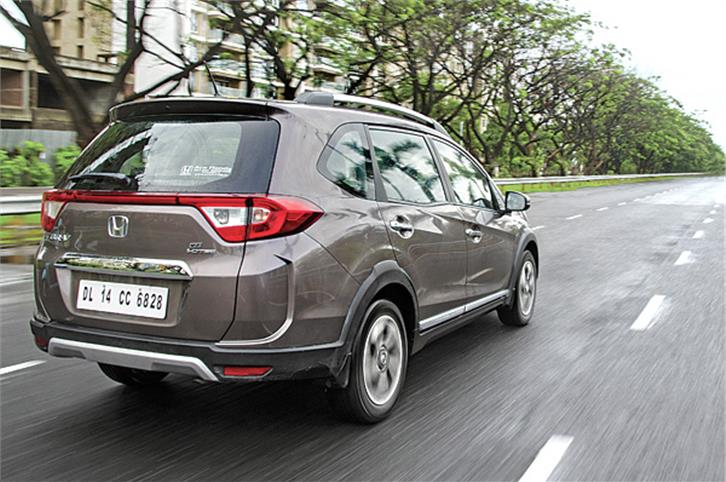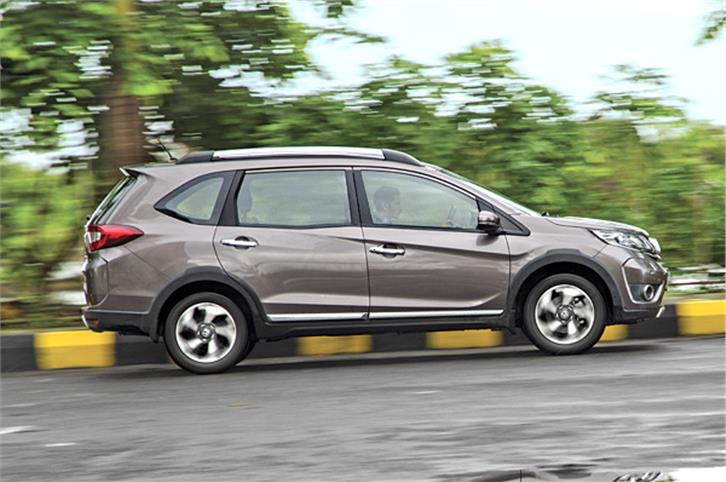After the immense popularity of the Duster and Creta, Honda has brought in its own contender with an ace up its sleeve – a third row of seats.
The BR-V gets the same 1.5-litre engines as the City and the Mobilio – a petrol and a diesel, with the same power outputs as before. The petrol car is available with a CVT automatic and both engines get a manual, but this time, the petrol motor too gets a six-speeder, rather than a five-speed unit.
Let’s start with the diesel version though, and the biggest surprise is that it’s a lot more refined now. Okay, it’s still a little noisy, especially past 2,000rpm, but seeing as how that was this motor’s biggest weakness, Honda’s done a good job of improving it in the BR-V. It’s a very drivable motor, and though the 100hp and 200Nm aren’t class best, you rarely feel wanting for more. Turbo lag is impressively minimal, and it revs up in a very stepless manner. The powerband feels nice and wide compared to other diesels in this class (and other Honda models with the same engine too), and though it lacks that exciting, punchy feeling, you will enjoy how linear it is.
The petrol engine is one we’ve been familiar with for a long time, and in its latest guise, the 1.5-litre i-VTEC makes 119hp and 145Nm. As ever, it’s an engine that just loves to rev, and if you enjoy driving, you’ll want to do that at every opportunity, especially since it gets a second wind beyond 5,500rpm! It’s even nice and responsive off the line, although the mid-range feels a bit flat when you want a sudden jump in pace. The reason you might possibly avoid racing to the redline in every gear is that it can sound quite buzzy when you do. This motor with the new six-speed manual is the best powertrain configuration for this car, not just for enthusiastic driving, but even for low-speed ambling. The added sixth gear means the ratios are now a little shorter and tighter stacked, but because of the way the engine’s tuned, you can still get most of your driving done in third or fourth. It’s really the best of both worlds.
The CVT automatic gearbox available with the petrol is quite a pleasant surprise. Provided you drive it in a civilised manner, there’s very little rubberband effect and it makes progress with impressive smoothness. It’s only when you push hard that it really starts to feel strained without sufficient acceleration; really lets that i-VTEC motor down. Sure, the paddles (a class first) are good at letting you hop between the gearbox’s seven ‘steps’ and the Sport mode makes pushing harder a marginally more rewarding affair, but all things said and done, this powertrain combo is not one to be hurried.
Considering its size, the BR-V is actually relatively light. The diesel manual weighs just 1,306kg, while the petrol manual and automatic weigh just 1,235kg and 1,238kg, respectively. While that should help fuel economy, it hasn’t really translated into incredible performance. The diesel, for instance, takes 14.5sec to get to 100kph, which makes it around 3-4sec slower than the competition, and even from a rolling start, it lags behind. The CVT BR-V’s 12.53sec 0-100kph time seems pretty decent, especially given how the gearbox gets put out of its element when you push it hard. Its kickdown times of 8.57sec for 20-80kph and 10.61sec for 40-100kph aren’t too shabby either, and even better the petrol manual version’s. But in acceleration from rest, it’s the manual that’s king of the range, with a 11.84sec 0-100kph time.









Comments
Member Login
Personal Details
No comments yet. Be the first to comment.